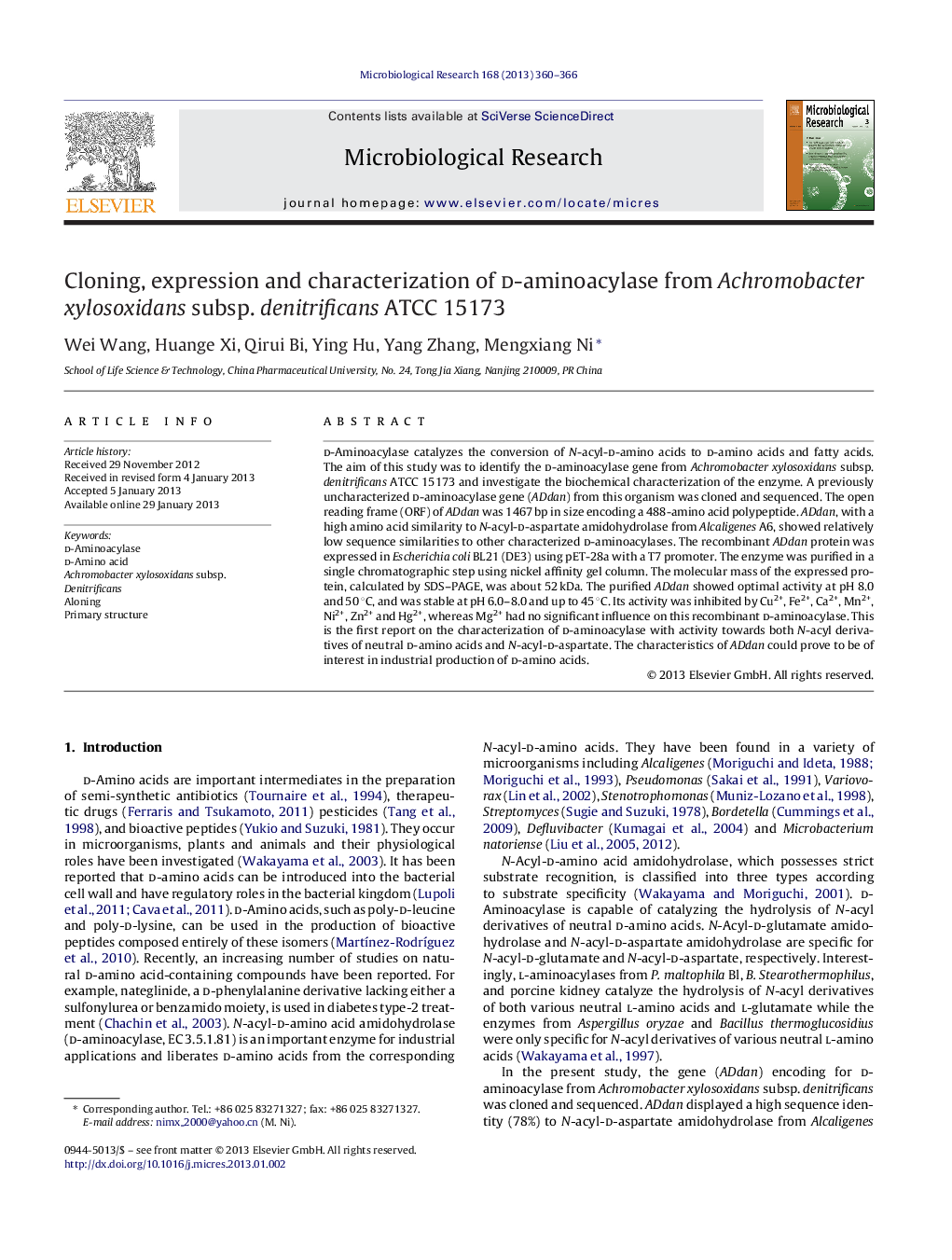| Article ID | Journal | Published Year | Pages | File Type |
|---|---|---|---|---|
| 2092621 | Microbiological Research | 2013 | 7 Pages |
d-Aminoacylase catalyzes the conversion of N-acyl-d-amino acids to d-amino acids and fatty acids. The aim of this study was to identify the d-aminoacylase gene from Achromobacter xylosoxidans subsp. denitrificans ATCC 15173 and investigate the biochemical characterization of the enzyme. A previously uncharacterized d-aminoacylase gene (ADdan) from this organism was cloned and sequenced. The open reading frame (ORF) of ADdan was 1467 bp in size encoding a 488-amino acid polypeptide. ADdan, with a high amino acid similarity to N-acyl-d-aspartate amidohydrolase from Alcaligenes A6, showed relatively low sequence similarities to other characterized d-aminoacylases. The recombinant ADdan protein was expressed in Escherichia coli BL21 (DE3) using pET-28a with a T7 promoter. The enzyme was purified in a single chromatographic step using nickel affinity gel column. The molecular mass of the expressed protein, calculated by SDS–PAGE, was about 52 kDa. The purified ADdan showed optimal activity at pH 8.0 and 50 °C, and was stable at pH 6.0–8.0 and up to 45 °C. Its activity was inhibited by Cu2+, Fe2+, Ca2+, Mn2+, Ni2+, Zn2+ and Hg2+, whereas Mg2+ had no significant influence on this recombinant d-aminoacylase. This is the first report on the characterization of d-aminoacylase with activity towards both N-acyl derivatives of neutral d-amino acids and N-acyl-d-aspartate. The characteristics of ADdan could prove to be of interest in industrial production of d-amino acids.
